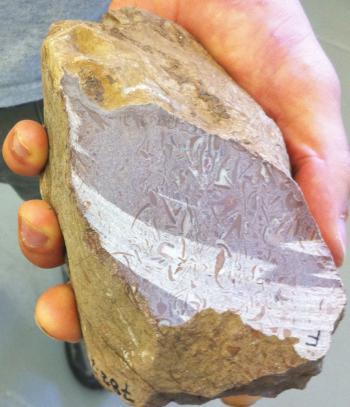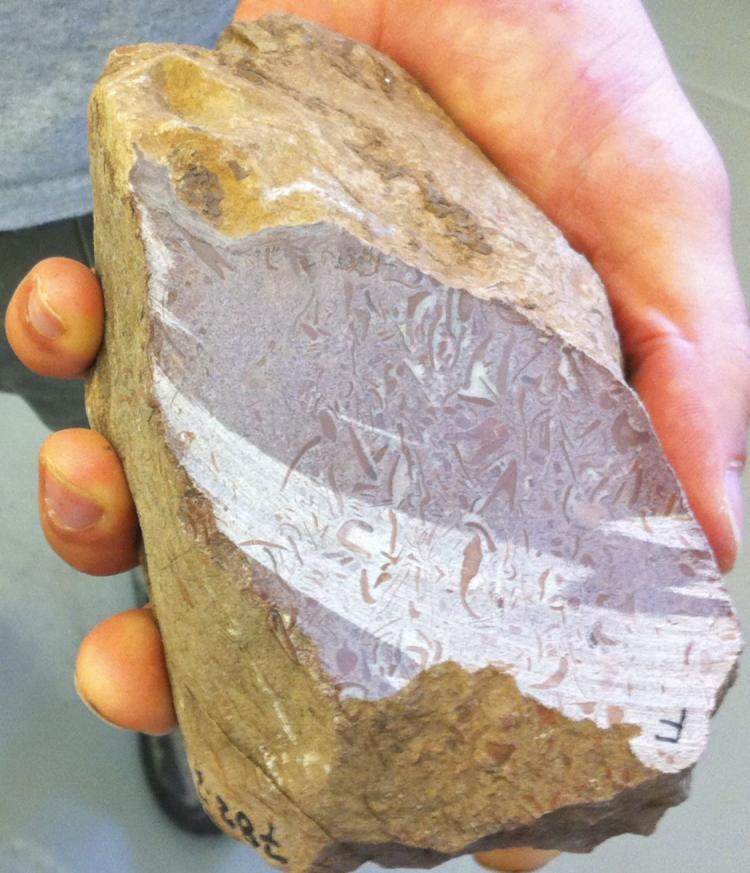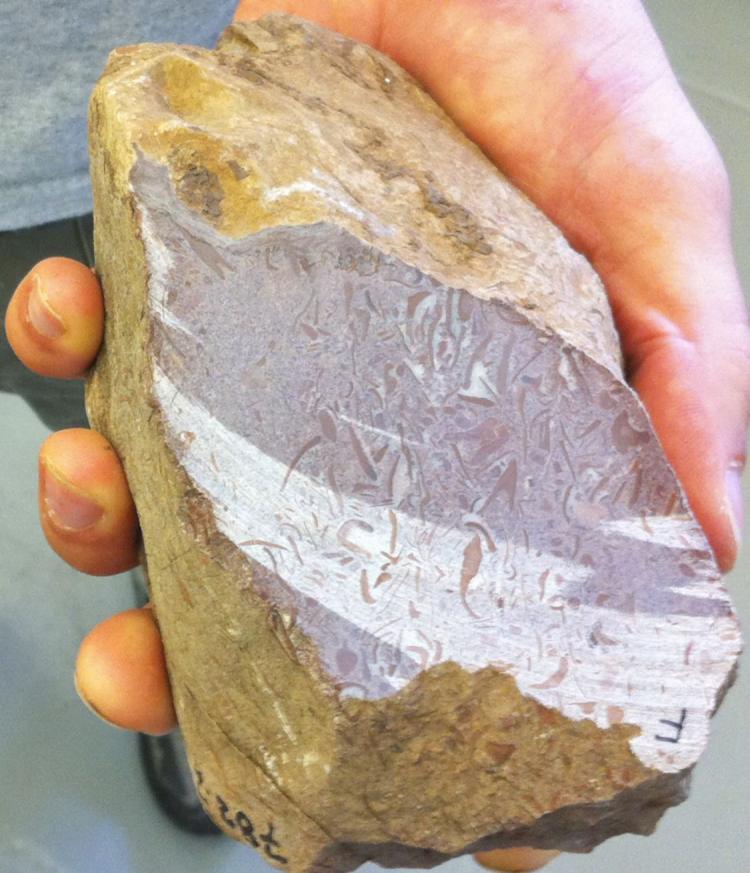Scientists have discovered animal fossils from about 650 million years ago. These fossils are older than all animal fossils previously discovered. The fossils, found in South Australia, are of hard-bodied, sponge-like animals.
“These scientists have found that animals may have appeared on Earth 90 million years earlier than previously known,” said H. Richard Lane of the National Science Foundation in a press release. “This is comparable to resetting modern times to begin during the late Cretaceous.”
Prior to this discovery, the oldest found hard-bodied animals were from 550 million year ago, while some controversial fossils of soft-bodied animals date to 577–542 million years ago.
“We were accustomed to finding rocks with embedded mud chips, and at first this is what we thought we were seeing,” said Dr. Adam Maloof of Princeton University in a press release. “But then we noticed these repeated shapes that we were finding everywhere—wishbones, rings, perforated slabs and anvils. We realized we had stumbled upon some sort of organism, and we decided to analyze the fossils.”
The finding was published in the journal Nature Geoscience on Aug. 17.
“These scientists have found that animals may have appeared on Earth 90 million years earlier than previously known,” said H. Richard Lane of the National Science Foundation in a press release. “This is comparable to resetting modern times to begin during the late Cretaceous.”
Prior to this discovery, the oldest found hard-bodied animals were from 550 million year ago, while some controversial fossils of soft-bodied animals date to 577–542 million years ago.
“We were accustomed to finding rocks with embedded mud chips, and at first this is what we thought we were seeing,” said Dr. Adam Maloof of Princeton University in a press release. “But then we noticed these repeated shapes that we were finding everywhere—wishbones, rings, perforated slabs and anvils. We realized we had stumbled upon some sort of organism, and we decided to analyze the fossils.”
The finding was published in the journal Nature Geoscience on Aug. 17.




